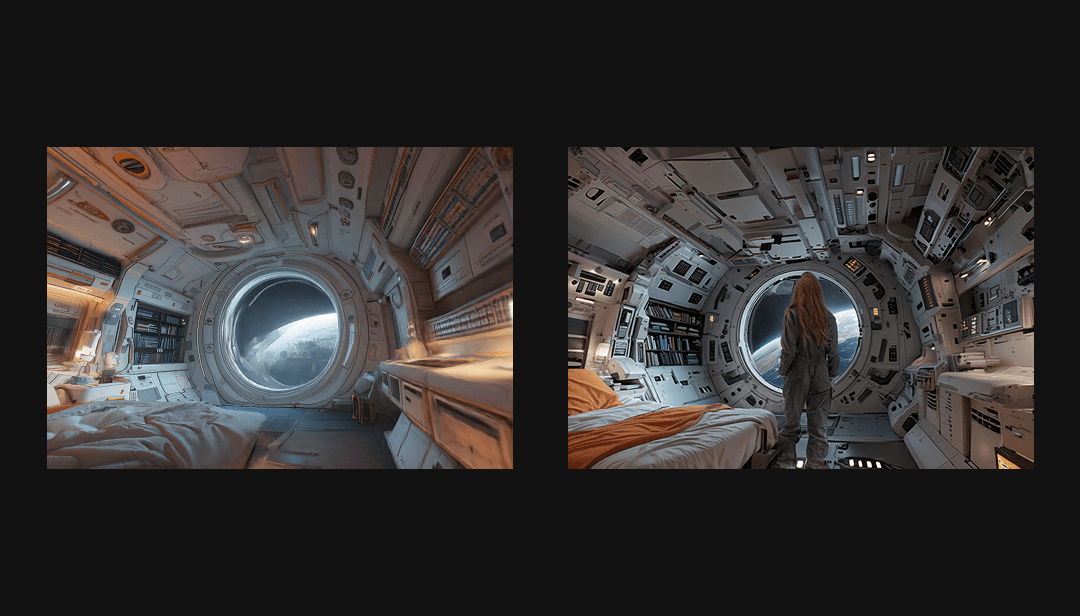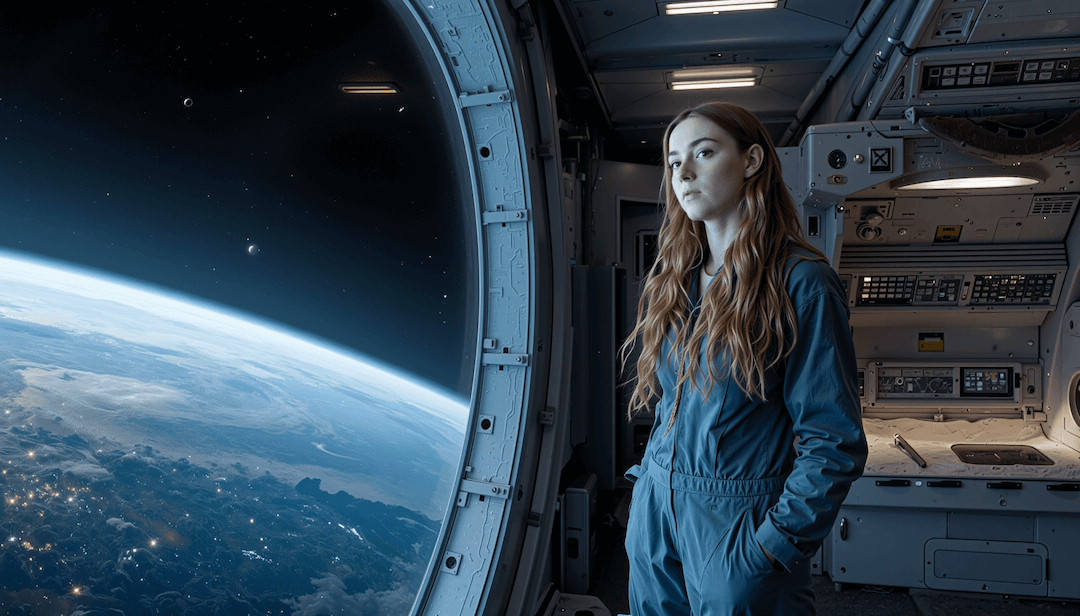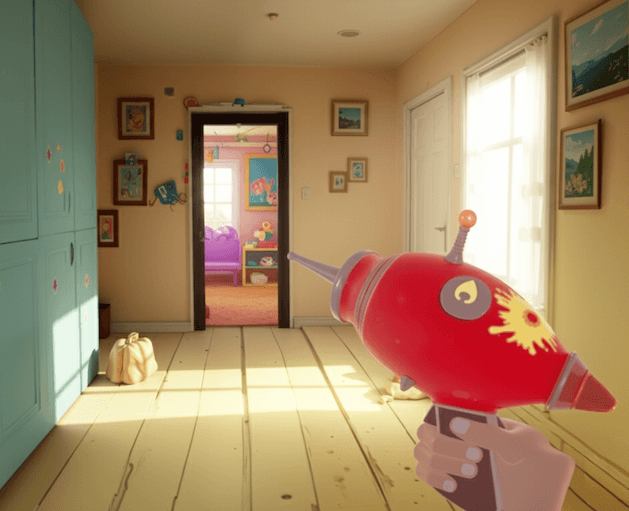Nov 12, 2025From drifting prompts to grounded worlds — how filmmakers are using Marble to anchor scenes, shots, and storytelling in stable 3D environments.
Framing Worlds: How Marble Helps Creators Bring Consistency to AI Filmmaking
Overview
Generative video tools have opened a new era for digital filmmakers, enabling entire scenes and performances to be created from simple text or images. Yet one challenge persists: consistency. AI models tend to shift environments between takes, alter lighting, and lose the spatial logic that makes a film believable.
Filmmaker Tim Simmons (Theoretically Media) and Henrik Vasquez set out to fix that using Marble, World Labs’ spatial generation platform. Instead of prompting each shot individually, they treated Marble as a virtual film set — a single, explorable 3D environment that holds together across multiple scenes.
Their experiments reveal how Marble can ground AI filmmaking in stable, cinematic worlds that stay coherent from shot to shot.
Theoretically Media — Building an AI Micro-Short on a Virtual Set
Filmmaker Tim Simmons, known online as Theoretically Media, has built an audience of more than 170,000 YouTube subscribers by exploring how AI is reshaping creative production. A former Hollywood documentarian, he’s now focused on what he calls “synthetic cinematography.”
For his 48-second micro-short Alarm, Tim wanted to test whether Marble could function like a digital backlot—a stable location that could be explored, framed, and reused throughout production.
The story itself was simple: a protagonist refusing to get out of bed. The test was not. Tim wanted to see if he could animate and composite an AI-generated character inside a single, coherent 3D environment without losing spatial logic between shots.
Marble gave me a stable 360-degree virtual set I could wander, I kept finding angles I’d never think to prompt for without an actual space to explore.
Tim Simmons, Theoretically Media
Using Marbles Space Station world, Tim treated the environment like a real set. He moved through the space, found corners and details that inspired new shots, and exported stills to use as plates. Every scene shared the same geometry and lighting, producing visual continuity that text-to-video tools alone couldn’t achieve.
Below: A frame from Tim’s Marble “Space Station” scene (left) and the final edited shot (right).

Creative Process and Workflow
Tim's process combined several tools around Marble's persistent world:
World creation: Marble generated a 3D set with consistent depth and lighting, letting Tim move through the space to frame and capture shots from any angle.
Character design: Characters were created in Midjourney using 360° pose references, then composited into camera captures from Marble scenes.
Animation: The combined shots were brought into Veo-3, where motion and timing were refined through re-rolls.
Compositing: Integrated with NanoBanana and Reve for character placement.
Editing and sound: Finalized in Premiere Pro, with score and ambient audio produced in Suno and ElevenLabs.
Because the world stayed constant, every iteration focused on performance and pacing rather than rebuilding the environment.
Once the set was locked, I could experiment freely with movement and emotion. The space gave me something solid to direct inside of.
Tim Simmons, Theoretically Media
Rik Vasquez — Episodic Worldbuilding for Film and Games
Game animator and artist Henrik “Rik” Vasquez, whose credits include Baldur’s Gate, Star Wars: Knights of the Old Republic, and Jade Empire, approached Marble from another direction. His project Cryptid Worlds explored how AI-generated 3D environments could support a full media pipeline spanning film, concept art, and game design. Rik used Marble Plus to create a series of twelve short episodes, each set in a connected world. By generating four Marble scenes and stitching them into a single .spz environment, he built a modular virtual stage where multiple stories could unfold.
Being able to walk through a generated world and pick my own camera angles was a game changer, It felt like location scouting in an alien world, but fast and completely controllable.
Rik Vasquez
He then composed scenes using Runway, Pika, and Sora, testing how live-action or animated elements could be layered into the generated spaces. The project demonstrated how quickly a single creator could produce cohesive episodic content using Marble as the base environment.
Why Marble
Both creators faced the same issue: AI filmmaking lacked spatial stability.
For Theoretically Media, Marble provided a narrative anchor—a persistent set that could be revisited from any angle.
For Rik, it served as a production backbone—a reusable stage that could host multiple sequences across different episodes.
Marble’s world-generation technology combines AI synthesis with Gaussian Splat rendering, producing lightweight but visually rich 3D environments. These worlds can be reused, reframed, and extended without any manual 3D modeling or game-engine setup. By turning AI scenes into persistent spaces, Marble allows filmmakers to approach generative production with the logic and structure of traditional cinematography.
Results and Impact
Together, these projects show how Marble stabilizes and elevates AI-driven filmmaking.
Key outcomes:
- Stable worlds that stay consistent across all shots and episodes.
- Faster iteration — rerolls focus on performance, not rebuilding sets.
- Improved composition through a continuous 3D set.
- Reusable production assets that carry over between projects.
Both filmmakers found that Marble turned experimental AI art into structured cinematic storytelling. Instead of generating disconnected frames, they could now create and inhabit coherent worlds built for narrative.

Looking Ahead
Tim and Rik are continuing to expand their Marble-as-studio approach in new directions.
Tim is developing another short that experiments with camera movement, blocking, and interactive character work inside Marble-generated environments. Rik, meanwhile, is extending Cryptid Worlds with animated props, dynamic lighting, and branching storylines that blend AI generation with interactive design.
Both see Marble evolving into a virtual backlot — a place where filmmakers can plan, shoot, and refine projects within one persistent space. For them, it represents more than a tool; it’s a creative environment where worlds can be built once and explored endlessly.
As AI filmmaking matures, these persistent worlds may become the foundation of how stories are staged, directed, and shared — marking the shift from prompting scenes to inhabiting worlds.
Read More
Sep 16, 2025
Gaussian Mansion: Creating Playable Worlds with Marble
Integrating spatial generation, AI-driven modeling, and Unreal Engine to streamline 3D world production from concept art to gameplay.

Sep 16, 2025
Splat World: Exploring New Dimensions of Gaussian Splatting in VR
How one developer turned Gaussian splats into a new language for building interactive worlds.
